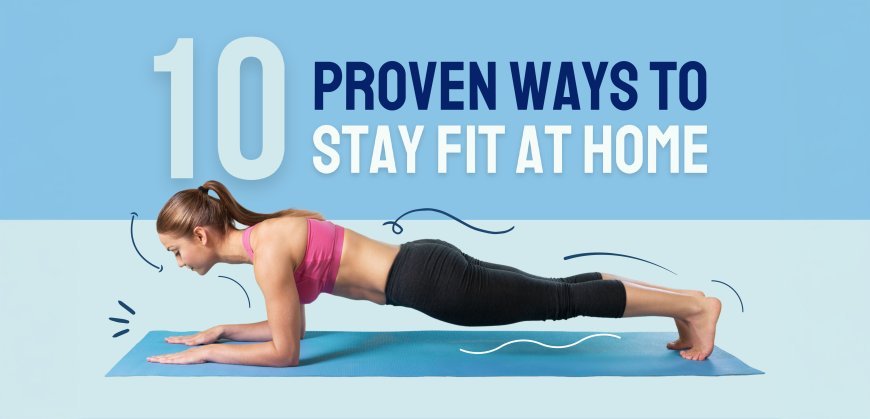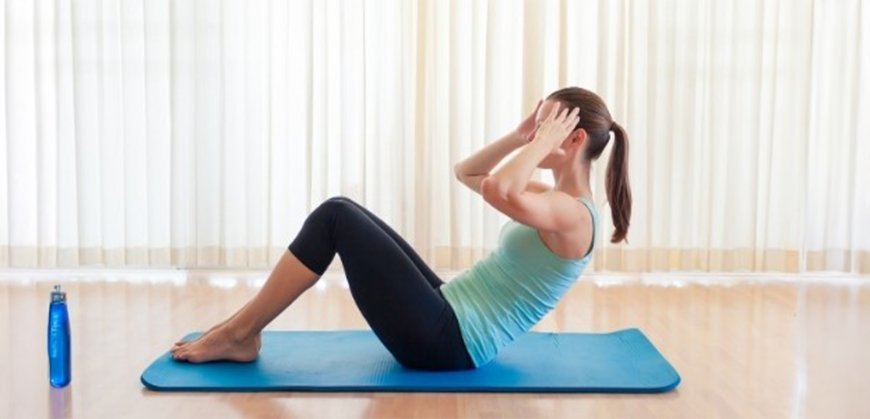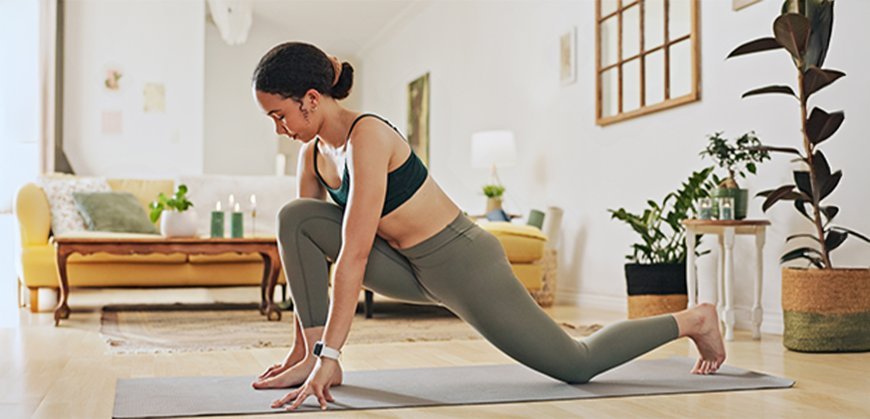No Gym? No Problem! 10 Proven Ways to Stay Fit at Home
No gym? No problem! Discover 10 powerful at-home workouts to build strength, burn fat, and stay fit, right from your living room!

Who says you need a gym to get in shape? With the right approach, your living room, backyard, or even a small corner of your home can become your ultimate fitness space. Whether you’re short on time, avoiding costly memberships, or just prefer the comfort of home workouts, you can still achieve strength, endurance, and flexibility without stepping into a gym.
But how do you make at-home workouts just as effective? Should you focus on HIIT, strength training, resistance bands, or mobility exercises? Can short, high-intensity sessions really replace long gym workouts?
This guide breaks down 10 scientifically backed and expert-approved at-home workout strategies that deliver real results. Whether you're a beginner looking for an easy start or a fitness enthusiast aiming to maintain progress, these methods will help you burn calories, build muscle, and stay active, right from home. Ready to transform your fitness routine? Let’s get started!
High-Intensity Interval Training (HIIT):
HIIT involves alternating short bursts of intense exercise with periods of rest or low-intensity activity. This training method is efficient for calorie burning and improving cardiovascular health. A 10-minute HIIT session can burn up to 150 calories. For example, a workout might include exercises such as jump squats, burpees, and mountain climbers, performed for 40 seconds each, followed by 20 seconds of rest. This approach not only burns calories during the workout but also increases your metabolic rate post-exercise.
Bodyweight Exercises:
Utilizing your own body weight for resistance, exercises such as push-ups, squats, lunges, and planks can effectively build strength and endurance. These exercises require no equipment and can be performed anywhere, making them accessible and versatile.

They target multiple muscle groups and can be modified to suit various fitness levels. For instance, push-ups can be done on your knees or against a wall to decrease difficulty, or with elevated feet to increase it.
Resistance Band Workouts:
Resistance bands are versatile tools that add variable resistance to your workouts. They are effective for enhancing strength, flexibility, and mobility. Exercises like bicep curls, shoulder presses, and leg extensions can be performed using resistance bands, accommodating a wide range of fitness levels. Bands come in various resistance levels, allowing for progression as you build strength. They are also lightweight and portable, making them ideal for home use.
Online Fitness Programs:
Many platforms offer structured workout plans that can be accessed from home. For instance, the Nike Training Club app provides a variety of strength and bodyweight workouts suited for different needs. These programs often include video demonstrations and progress tracking, making it easier to follow along and stay motivated. Some platforms also offer live classes, providing a sense of community and real-time instruction.
Incorporate Micro-Workouts:
For those with busy schedules, micro-workouts involve short, intense bursts of physical activity that can be integrated into daily routines. Activities such as squats, push-ups, or jumping jacks performed during brief periods, like waiting for food to cook or during TV commercials, can contribute to overall fitness. This approach makes it easier to accumulate exercise throughout the day without dedicating a large block of time. Over time, these small efforts add up, contributing to improved cardiovascular health and muscle strength.
Utilize Fitness Apps:
Fitness apps can provide guided workouts, track progress, and offer motivation. For example, the Nike Training Club app offers a variety of workouts tailored to different fitness levels and goals. Features often include customizable workout plans, instructional videos, and progress tracking. Some apps also integrate with wearable technology to monitor metrics like heart rate and calories burned, providing a comprehensive view of your fitness journey.
Explore Sprint Interval Training (SIT):
SIT is a variation of HIIT that involves short bursts (10-30 seconds) of maximum effort exercise followed by extended rest periods (2-4 minutes). This method is efficient for improving cardiovascular fitness and muscle endurance.

SIT workouts can include exercises like running, cycling, or bodyweight movements, making them adaptable for home settings. For example, performing high-knee runs or burpees at maximum effort for 20 seconds, followed by a 2-minute rest, repeated for several rounds. This type of training has been shown to improve aerobic capacity and insulin sensitivity.
Engage in Low-Impact Resistance Training:
Low-impact resistance programs focus on controlled, deliberate movements to improve strength and balance. These exercises are gentle on the joints and suitable for individuals of all fitness levels, including those recovering from injuries. Examples include Pilates, yoga, and certain bodyweight exercises that emphasize slow, controlled motions. Such programs have been shown to improve lower body strength and flexibility, which are particularly beneficial for older adults or those managing chronic conditions.
Incorporate Flexibility and Mobility Exercises:
Practices like yoga or dynamic stretching can improve flexibility, balance, and reduce the risk of injury. Many online platforms offer guided sessions focusing on these aspects, which are essential components of a well-rounded fitness routine. Regularly engaging in flexibility and mobility exercises can enhance performance in other workouts and daily activities by improving the range of motion and muscle coordination.
Leverage Wearable Technology:
Wearable devices, such as fitness trackers and smartwatches, monitor metrics like heart rate, steps, and sleep patterns, helping individuals tailor their workouts and monitor progress. For instance, Apple's Fitness app integrates with the Apple Watch to provide comprehensive activity tracking and personalized workout recommendations. These devices can also remind you to move throughout the day and provide insights into your overall health, aiding in maintaining consistency and motivation.
By following these strategies, you can create a diverse and effective at-home fitness regimen that suits your lifestyle and goals. Consistency and proper technique are key to achieving desired results.
FAQs
Are at-home workouts effective?
Yes, at-home workouts work. Use bodyweight, resistance bands, or household items for strength and endurance. Consistency is key.
How often should I exercise at home?
Exercise 150 mins moderate or 75 mins vigorous weekly. Do 30-min sessions, 5 days a week, plus strength training twice a week.
What equipment do I need for home workouts?
No equipment needed, but resistance bands, dumbbells, or a yoga mat help. Use household items like water bottles or chairs for resistance.
Can I build muscle with home workouts?
Yes, home workouts build muscle. Use bodyweight moves like push-ups, squats, and resistance bands for strength.

 Admin
Admin